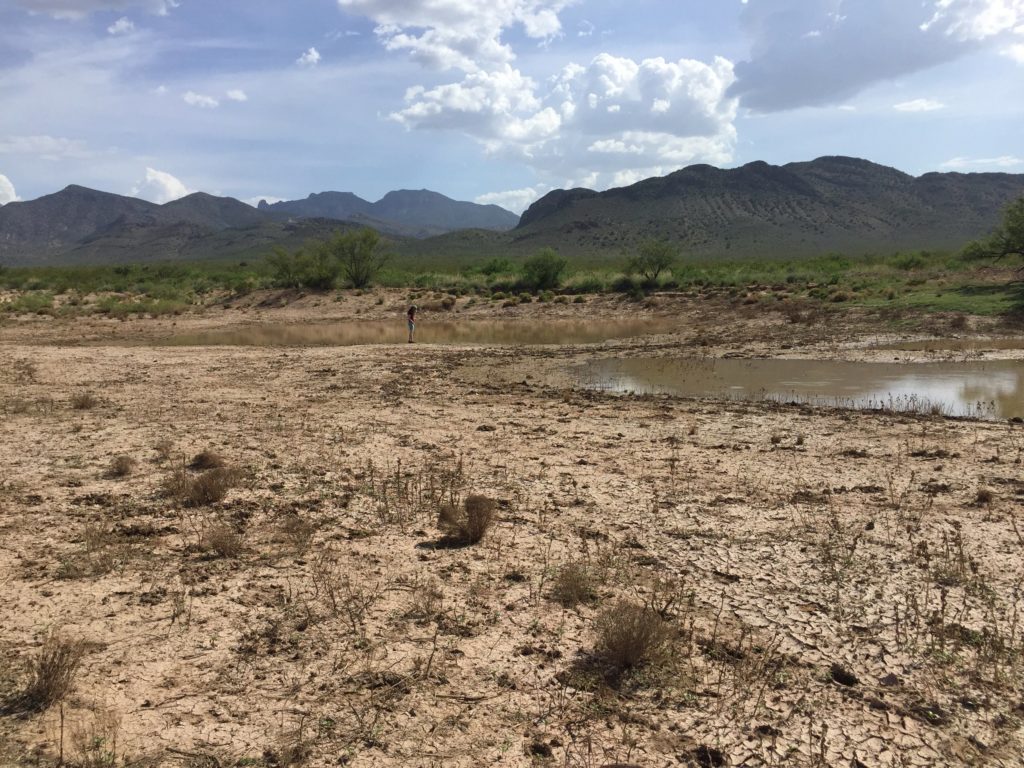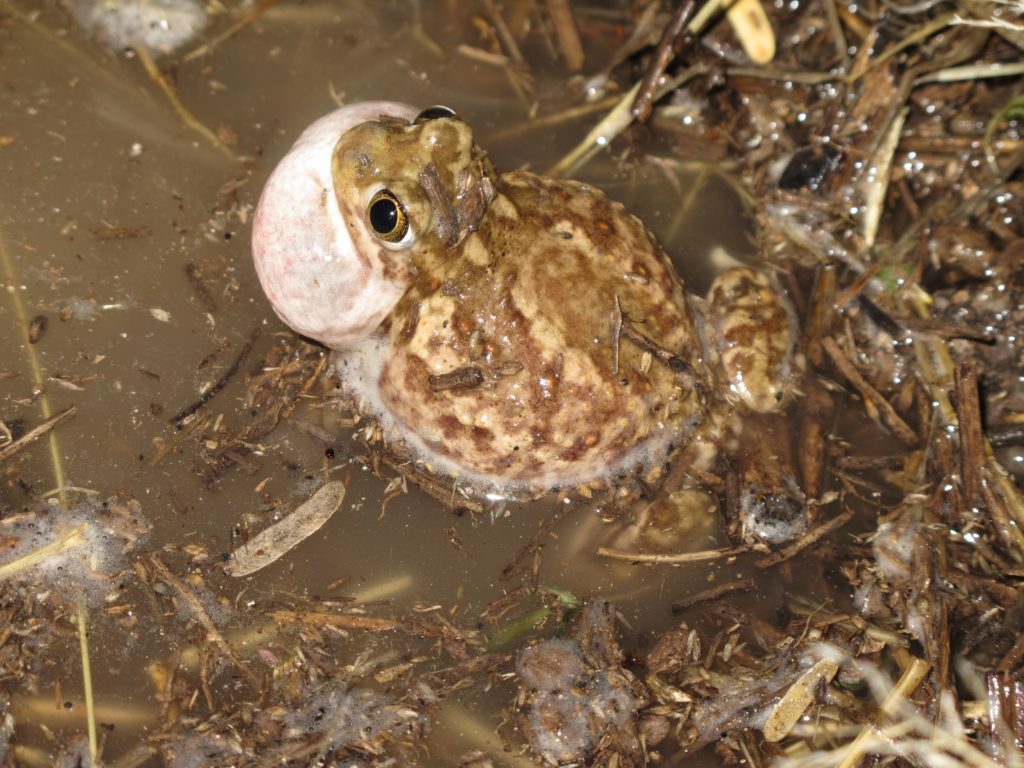RESEARCH OVERVIEW
My lab integrates behavior, ecology, and evolution to understand behavior’s role in the origins and distribution of biodiversity. I combine work in natural populations with lab-based experiments and genetic analyses. We primarily study the evolution of mate choice behavior, because it is both subject to strong selection and is itself a potent selective force.
We use spadefoot toads as our study system. We work with two species of spadefoot toads, Spea bombifrons and S. multiplicata that interbreed (hybridize) in the southwestern USA.
The lab’s major areas of work are summarized below; all are conducted with the aim to integrate across them.
Hybridization and its Consequences
Origins and genetic consequences of adaptive hybridization.
Hybridization—interbreeding between species—is generally thought to be both deleterious (e.g., because it often results in sterile or inviable offspring) and a force that reduces biodiversity (e.g., via species collapse). However, hybridization can also enhance fitness and generate novel traits (by generating new genetic combinations), suggesting that hybridization can actually enhance diversity. Our work suggests that hybrid fitness depends on a complex interplay of genetic interactions, the environment, and even individual condition or developmental history. One of our goals is to understand how these various factors contribute to hybridization in nature.
We focus this work on S. bombifrons. The females of this species can actually benefit by hybridizing with S. multiplicata males. However, they only benefit when they breed in highly ephemeral ponds where hybrid tadpoles have a fitness advantage of faster development. Ponds vary in space and time in their ephemerality, so females have evolved the ability to modify whether or not they mate with heterospecifics depending on the prevailing fitness consequences of hybridization. In short, females prefer males of their own species when hybridization is costly, but switch their preferences and prefer S. multiplicata males when hybridization is beneficial. Mate choice thereby contributes to hybridization when it is beneficial and isolation between species when it is not.
Consequently, gene flow between species (introgression) can vary in both time and space. Using S. bombifrons, we are investigating how variation in the fitness consequences of hybridization impacts behavioral evolution and the distribution of species.
Origins and consequences of behavioral plasticity.
That female S. bombifrons change their preferences for males of their own species versus males of another species depending on their environment is a remarkable expression of behavioral plasticity. We are using this behavior to identify the evolutionary origins and underlying mechanisms of decision-making behavior. We have found, for example, that aspects of female mate choice for heterospecifics might reflect the evolutionary modification of an ancestral preference. We have also found that diet in young toads can alter neurochemical responses to the calls of the two species; the responses mirror behavioral patterns in adults, suggesting that early development might have long term impacts on decision-making. Future work is aimed at investigating how the underlying mechanisms of condition-dependent mate choice impact the evolution of the behavior.
Hybridization as a facilitator of range expansion.
Why some species expand their ranges whereas others do not is an enduring question in ecology and evolution with major implications for conservation biology. One factor that might determine whether, and how, a species expands its range is hybridization. Our work in spadefoot toads evaluates this possibility. Specifically, Plains spadefoot toads appear to have expanded out of their ancestral grassland habitat into the deserts of the southwestern USA. This expansion into a completely new biome appears to be driven by the evolution of adaptive hybridization behavior, which might also be linked to enhanced dispersal behaviors.
Evaluating hybridization’s role in species range dynamics is important, because species that undergo range expansions will encounter new species and thereby generate novel ecological and evolutionary dynamics that can impact trait evolution and population dynamics of the resident species, as well as alter ecosystem and community dynamics. In light of global biodiversity threats and movement of species, hybridization is not merely a question of academic interest, but one that impinges on issues of conservation and public policy. Evaluating the factors that drive range expansions is therefore not only crucial for explaining the distribution of biodiversity, but also for understanding how best to protect it.
Recent representative papers:
Chen, C. and K. S. Pfennig. 2020. Females engaging in adaptive hybridization prefer high-quality heterospecifics as mates. Science. 367 (6484): 1377-1379 doi: 10.1126/science.aaz5109.
Pfennig, K. S. 2019. How to survive in a human-dominated world. Science 364: 433-434. DOI: 10.1126/science.aax3713
Pierce, A. A., R. Gutierrez, A. M. Rice and K. S. Pfennig. 2017. Genetic variation during range expansion: effects of habitat novelty and hybridization. Proceedings of the Royal Society B – Biological Sciences 284: 20170007. http://dx.doi.org/10.1098/rspb.2017.0007
Pfennig, K. S., A. L. Kelly and A. A. Pierce. 2016. Hybridization as a facilitator of species range expansion. Proceedings of the Royal Society B – Biological Sciences 283: 20161329. http://dx.doi.org/10.1098/rspb.2016.1329.
Pfennig, K. S. 2019. How to survive in a human-dominated world. Science 364: 433-434. DOI: 10.1126/science.aax3713
Pierce, A. A., R. Gutierrez, A. M. Rice and K. S. Pfennig. 2017. Genetic variation during range expansion: effects of habitat novelty and hybridization. Proceedings of the Royal Society B – Biological Sciences 284: 20170007. http://dx.doi.org/10.1098/rspb.2017.0007
Pfennig, K. S., A. L. Kelly and A. A. Pierce. 2016. Hybridization as a facilitator of species range expansion. Proceedings of the Royal Society B – Biological Sciences 283: 20161329. http://dx.doi.org/10.1098/rspb.2016.1329.



Character Displacement and its Consequences
Mate choice evolution and species interactions
When mating between two species carries fitness costs (such as sterile or poorly developing offspring) selection can favor the evolution of behaviors that reduce the chances of interbreeding. This process, known as “reproductive character displacement” can generate divergent mate choice between populations that do and do not risk hybridization. This divergence in mate choice, in turn, drives differential dynamics of sexual selection between populations that encounter heterospecifics versus those that do not with the result that populations can undergo further divergence genetically and phenotypically. We are interested in examining these downstream consequences, including their effects on population dynamics, community structure, and genetic differentiation between populations.
Mate choice and the origin of species
When two populations diverge in mate choice and associated traits, individuals might be less likely to mate with others from the alternative population. Consequently, these populations might become reproductively isolated and ultimately undergo speciation. Because reproductive character displacement generates divergence among populations, this process can initiate speciation (including multiple speciation events such as those in adaptive radiations) by driving population divergence in mating traits. Theoretical and empirical work supports this possibility, but also reveals that the process might require key conditions in order to occur. We are investigating if, and under what circumstances, reproductive character displacement initiates reproductive isolation—and possibly speciation—between populations that do and do not experience deleterious reproductive interactions with other species.
Additionally, reproductive character displacement (specifically, reinforcement) is thought to be important in finalizing species boundaries. Indeed, as a result of reinforcement, species can become more divergent and hybridization can decline over time. Thus, mate choice plays a crucial role in both initiating and finalizing speciation.
However, hybridization can be adaptive in some circumstances, posing the problem of how reproductive isolation can be maintained in the face of gene flow between species. We currently seek to understand if, and how, reinforcement and adaptive hybridization proceed in the same system.
Recent representative papers:
Calabrese, G. M. and K. S. Pfennig. 2020. Reinforcement and the proliferation of species. Journal of Heredity 111 (1): 138–146, https://doi.org/10.1093/jhered/esz073.
Seidl, F., N. A. Levis, C. D. Jones, A. Monroy-Eklund, I. M. Ehrenreich, and K. S. Pfennig. 2019. Variation in hybrid gene expression: implications for the evolution of genetic incompatibilities in interbreeding species. Molecular Ecology 28: 4667– 4679. https://doi.org/10.1111/mec.15246
Pfennig, K. S. and A. M. Rice. 2014. Reinforcement generates reproductive isolation between neighbouring conspecific populations of spadefoot toads. Proceedings of the Royal Society B – Biological Sciences 281: 20140949.
Pfennig, K. S. and D. W. Pfennig. 2009. Character displacement: ecological and reproductive responses to a common evolutionary problem. The Quarterly Review of Biology 84: 253-276.
Pfennig, K. S. and M. J. Ryan. 2006. Reproductive character displacement generates reproductive isolation among conspecific populations: an artificial neural network study. Proceedings of the Royal Society B – Biological Sciences 273: 1361-1368.
Pfennig, K. S. 2003. A test of alternative hypotheses for the evolution of reproductive isolation between spadefoot toads: support for the reinforcement hypothesis. Evolution 57: 2842-2851
Pfennig, K. S. 2000. Female spadefoot toads compromise on mate quality to ensure conspecific matings. Behavioral Ecology 11: 220-227.


